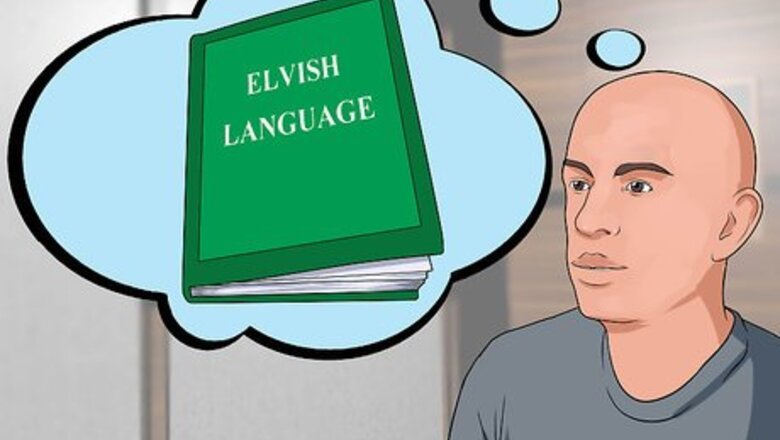
views
X
Research source
Accordingly, you'll likely need to use a bit of your own or others' creative interpretation to write in Elvish. Still, you can quickly familiarize yourself with some of the basics of Tolkien's Elvish and even learn to write in the alphabets he designed.
Understanding the Basics of Tolkien’s Elvish

Recognize that there’s no one Elvish language to rule them all. The Lord of the Rings series was written in part as an extension of Tolkien’s interest in creating new languages. You could even say that the characters were literary devices through whom he could use the languages he loved to invent. And invent he did: there are 15 different dialects of Elvish alone. However, only two – Quenya and Sindarin – have enough established words and grammar rules to be functionally used. People study, speak, and write in each of these languages.
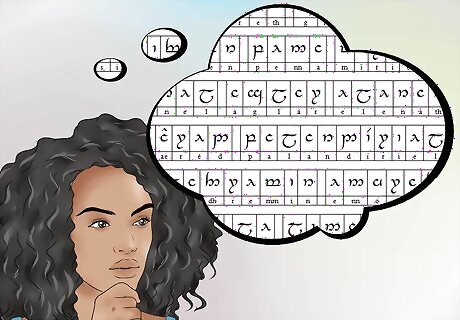
Know that you’re likely familiar with Sindarin. Sindarin was the Elvish language that Tolkien featured most frequently in the Lord of the Rings series. The names of many places and characters in the series are Sindarin, and the dialect was the most common Elvish language during the fictional time period of Middle Earth. Sindarin is closely related to Quenya. The distinctions between the two have to do with specific aspects of the fictional histories Tolkien created. Quenya, which uses words that mostly end in vowels or r, l, or n, is based on Finnish, a language Tolkien particularly favored. Sindarin words almost always end in consonants, and consonant clusters are more common. Sindarin reminds many people of Celtic languages, and was based on Welsh.

Learn the Feanorian letters. Though Tolkien also invented several alphabets, the Feanorian letters – which make up the Tengwar alphabet – were most prominently featured in his work, and are most commonly used today. Depending on dialect, this alphabet is written in different modes. The Tengwar alphabet is always written left to right, in horizontal lines. Find an image of the Feanorian letters online. Note that different modes will affect the appearance of certain letters. Further, be aware that different renditions of Tolkien’s alphabets are extremely common. Different renditions may appear differently depending on the fictional historical time period, or specific Tolkien piece, from which they were derived.
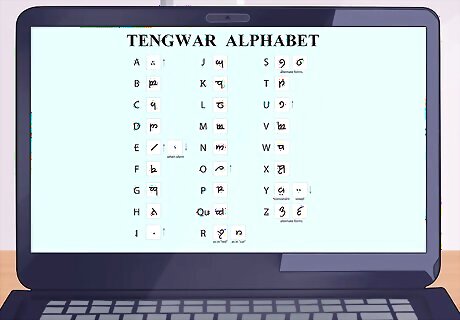
Learn the Tengwar alphabet’s supplementary letters. Some common two-letter combinations in English – such as “sh”, “nd” and “ld” are replaced by individual letters of the Tengwar alphabet. These letters should also be included in alphabets that are available online. The important thing to note is that the Tengwar alphabet has more letters than the English alphabet, for instance.
Writing a Word in Quenya
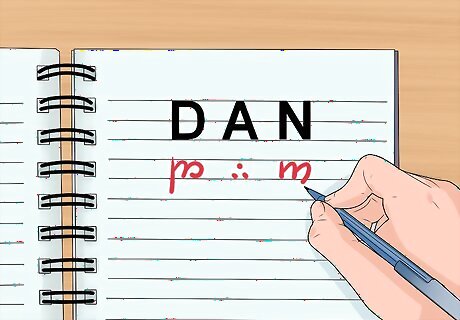
Start writing Elvish in the Quenya mode. The Quenya mode is most commonly used in written Elvish today. Different modes of writing the Tengwar alphabet are used for different dialects. These different modes affect, among other things, the way vowels are indicated when written down. Barring some specific rules regarding certain letters, you may be able to simply replace most consonants in your English name with their equivalent in the Tengwar alphabet. For instance, to write the name "Dan," first simply find the Tengwar equivalent of "D", "a", and "n."
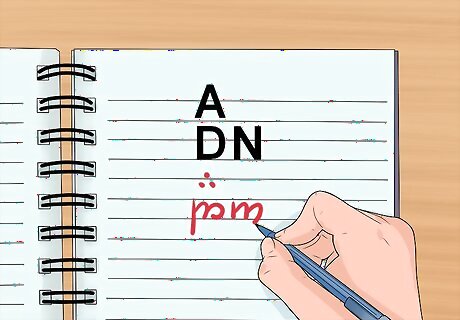
Indicate vowels properly. Vowels will usually require a shift in lettering and marking, as opposed to a simple replacement of the letter. In the Quenya mode, vowels are indicated by diacritics that appear above the preceding consonant. Accordingly, shift the marking for a vowel up and to the left, so you end up writing it above the letter that came before the vowel. Continuing with the example of "Dan," shift the marking for the letter "a" above the preceding marking for the letter "D". Follow these stacked markings with the marking for the letter "n", and you've written "Dan" in Elvish! For “y” and “e”, the markings to indicate these letters go below the preceding consonant instead of above. In Sindarin mode, diacritics that indicate a vowel appear above the following consonant.
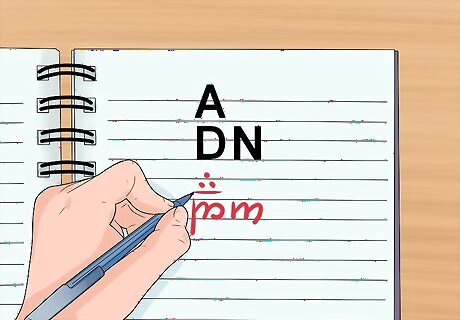
Use a place holder for some vowels. More specifically, draw a place holder beneath vowels that are not preceded by a consonant. For instance, when a vowel starts a word or follows another vowel, you need something beneath the marking for a vowel. This is most commonly a short vertical line that simply takes the place of the consonant that isn’t there.
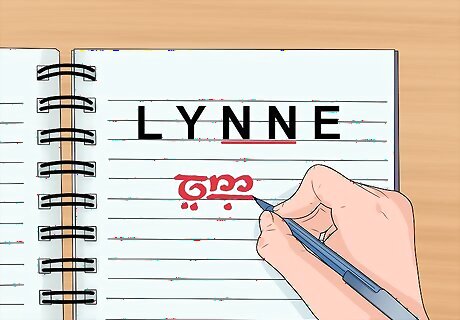
Draw a wavy line to indicate a double consonant. Double consonants of the same letter are indicated by a wavy line written beneath a letter. More specifically, instead of writing the same consonant twice in a row, write it once, then draw a wavy line beneath the letter.
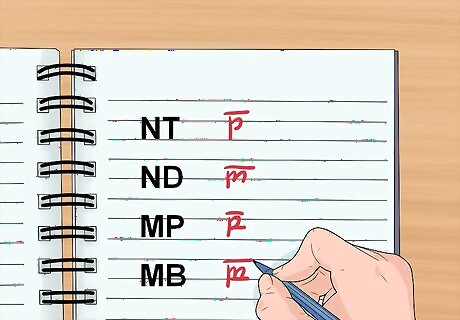
Learn the special rules regarding certain letters. Depending on where “s” and “r” are located in a word, certain markings most necessarily accompany or replace these letters. For instance, when “s”, “ss”, or “r” follow a vowel, there is actually a different consonant that does not have an equivalent in the English language. Similarly, when “s” follows another consonant, it is written with a downward hook. Another example involves drawing a line above a consonant that follows a nasal “n” or “m” sound.
Studying Elvish Further
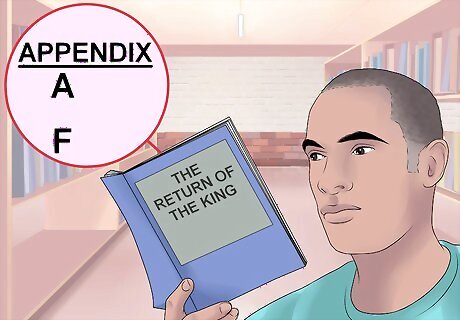
Read the appendixes of The Return of the King. If you’re hoping to learn more about Tolkien’s languages, there are two appendices – A and F – in one of the books from the Lord of the Rings series that should be your primary sources. These appendices describe the various languages, as well as different types of letters, in detail. These appendices also contain a guide to pronunciation of Tolkien’s languages, as well as music to which Tolkien wrote Elvish lyrics.

Consult Tolkien’s original manuscripts. The manuscripts for many of Tolkien’s works are stored in Milwaukee, Wisconsin, at Marquette University. The margins of the manuscripts include all sorts of notes about how and why he chose or developed certain Elvish words. Further, unpublished works contain new Elvish words that continue to be “discovered.” The Elvish Linguistic Fellowship is another source of a wealth of material, some of which was created using some of Tolkien’s unpublished works.

Consider reading other author’s works on Tolkien’s languages. An Introduction to Elvish, written by Jim Allen, is widely respected as the most substantial work on Tolkien’s languages. However, many consider it to be outdated. The Languages of Tolkien’s Middle-earth is reportedly “less accurate,” but is still recommended. The Tolkien Society recommends several other sources for further reading.
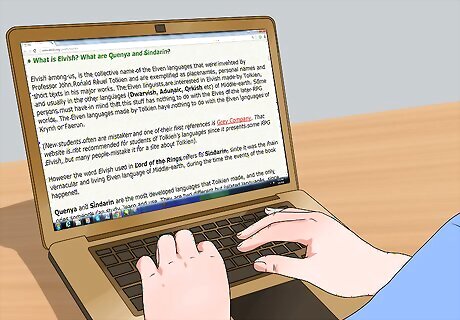
Take Quenya or Sindarin courses online. You read that right. You can take courses and tutorials online developed by people who have extensively studied Tolkien’s languages. The modern languages in which these lessons are taught vary, as so the approach and inspiration that led to their creation.
















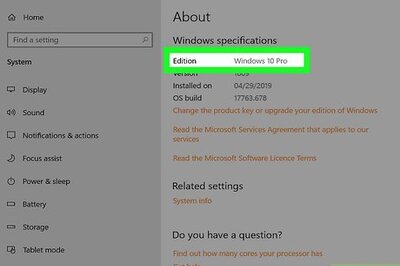

Comments
0 comment